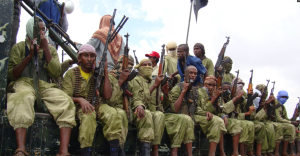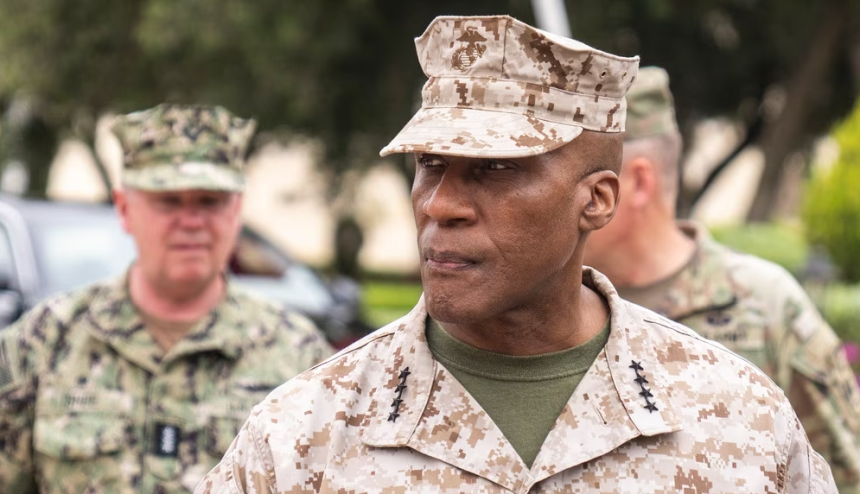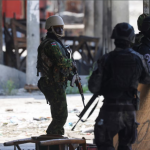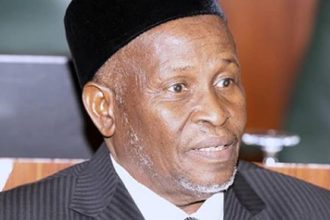The Islamic State in Somalia has nearly doubled its strength over the past year, according to U.S. Africa Command (AFRICOM) Chief, General Michael Langley, in an exclusive interview with VOA.
“I am concerned about the northern part of Somalia and ISIS growing in numbers,” Gen. Langley stated, using the acronym for the terror group.
Although Langley did not specify the exact number of Islamic State fighters in Somalia, he confirmed that their presence had grown “twofold” in the past year. Previous estimates had placed the number of Islamic State fighters in northern Somalia at around 200.
The AFRICOM commander also cautioned about the potential increase of foreign fighters within Islamic State’s ranks in Somalia.
Earlier this year, Somali Brigadier General Abdi Hassan Hussein, former intelligence and police commander of Puntland, where Islamic State has a foothold, told VOA that the number of foreign fighters alone could be in the hundreds. However, local authorities have not confirmed this figure.
In June, a U.S. official revealed to VOA that Abdulqadir Mumin, the leader of Islamic State in Somalia, had been targeted in a U.S. airstrike in May, though Mumin is believed to have survived the strike.
When asked if Mumin could now be the global leader of IS, Langley acknowledged the reports, stating, “ISIS professes that. Sometimes you’ve got to take that seriously.”
Rising Al-Shabab Influence
Simultaneously, the increase in Islamic State fighters in northern Somalia coincides with a resurgence in recruitment efforts by al-Qaida affiliate al-Shabab. This resurgence has been fueled by diplomatic tensions between Somalia and Ethiopia.
Earlier this year, Ethiopia and Somalia’s breakaway Somaliland region signed a memorandum of understanding to use the Red Sea port of Berbera—a deal that Somalia has strongly opposed. Speaking before the U.N. General Assembly, Somali Prime Minister Hamza Abdi Barre accused Ethiopia of actions that “flagrantly violate” Somalia’s territorial integrity.

“They have used that (dispute) to their advantage,” Gen. Langley said in reference to al-Shabab’s recruitment efforts.
Al-Shabab’s ranks have remained robust, with an estimated 12,000 to 13,000 fighters, backed by strong financial support and aggressive recruitment, according to senior defense officials in June. However, political disagreements have undermined counter-terrorism cooperation between Ethiopia and Somalia, with Langley noting that joint operations between the two countries have been “limited.”
“Time will tell if they can settle their differences and coalesce into a force that’s very effective, because when they do work together, they’re very, very effective at clearing out al-Shabab,” Langley added.
Ongoing Attacks and Counterattacks
Al-Shabab has continued to carry out attacks, particularly targeting civilians in Somalia. In August, the group claimed responsibility for a gun and suicide bombing attack on a popular beach in Mogadishu, killing at least 32 people. The group is also suspected of two deadly bombings in September, one in the Middle Shabelle region and another near the president’s office.
While al-Shabab has suffered territorial losses in southern Somalia, particularly in the South West State and Juba River Valley, it has regained ground in central Somalia, reversing gains made by Somali forces over the last two years, according to U.S. defense officials.
“We need a credible holding force, because sometimes shadow governments of al-Shabab try to reinsert themselves back in the region and influence local leaders,” Gen. Langley said. He stressed that the period following the liberation of an area is “very fragile,” and urged the Somali government and international partners to establish local services to build confidence in the federal government.
ATMIS Transition and Future Plans
Later this year, the African Union Transition Mission in Somalia (ATMIS) will conclude after nearly two years of aiding Somalia in its fight against al-Shabab. It will be replaced in 2025 by a new African Union Support and Stabilization Mission. The specific forces involved in the new mission are still being negotiated by the African Union and the United Nations.
Langley clarified that the U.S. will not take part in this transition. “Our role is to advise and assist in their training, but the fight is theirs,” he said.
Concerns Over Houthi Involvement
Somalia faces additional challenges from Iranian-backed Houthi militants in Yemen, who have shown aspirations to collaborate with al-Shabab, according to Langley. “We’re concerned, and we’re closely watching that, because this can turn into a bad neighborhood real quick,” he warned.
Langley expressed concern over the potential threat posed by Houthis and al-Shabab on both sides of the Gulf of Aden, which could disrupt the strategic waterway and impact global commerce. Analysts fear that Houthis could introduce more advanced weaponry into Somalia’s conflict.
Since October, Houthi militants have targeted more than 80 merchant vessels with missiles and drones in the Gulf of Aden, resulting in several ship seizures and the deaths of at least four sailors. The Houthi militant campaign intensified following Israel’s retaliation against Hamas, with Houthis claiming solidarity with Palestinians.
With the dual threats of Islamic State’s growth and al-Shabab’s resurgence, Somalia’s security situation remains precarious. Despite efforts by international and regional forces, the path to stability in Somalia is fraught with complex political and security challenges.
(AP)















